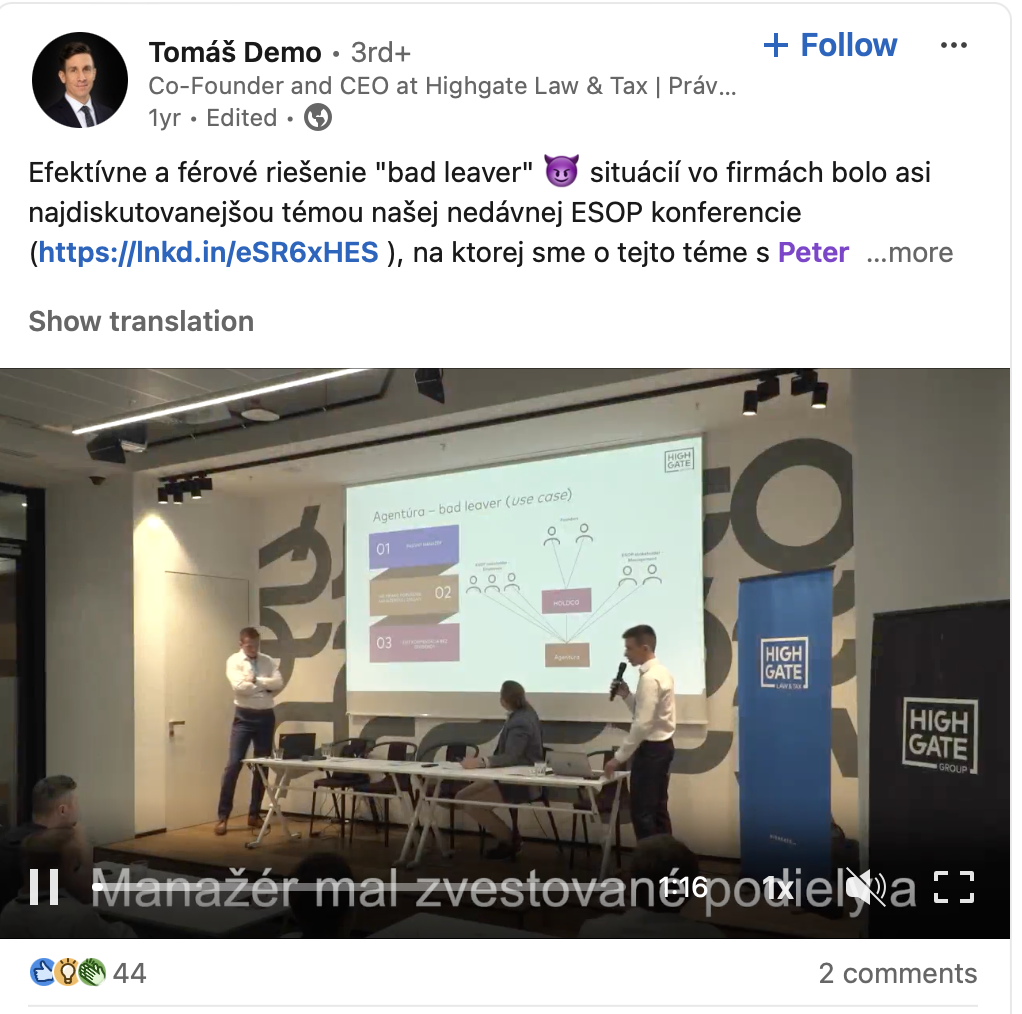

Effective and fair resolution of “bad leaver” 😈 situations in companies was probably the most discussed topic at our recent ESOP conference(https://lnkd.in/eSR6xHES ), where Peter Varga, Daniel Gaspar and Viktor Primus and I discussed this topic in a practical way. So what are our recommendations and best practice solutions to bad leaver situations? 👉 ✅ Define bad leaver situations as narrowly as possible – only material breaches of employment (contractor) agreements and actions that meet the elements of a criminal offence 🚔;
✅ think about the grey area – for example, in the case of executive positions, cover also situations where the manager, after the shares/equities are announced, although not in breach of contract, does not “reform” and becomes a “dead equity” 💀;
✅ even in a bad leaver situation, leave the board the option to decide that the bad leaver will receive a (reduced) share of the eventual exit 💵 but will lose the right to a dividend 🏧;
✅ deal with the redemption of the bad leaver’s vested stake/shares through a call option by the company (partners/shareholders) at par or discounted value. Key recommendation in conclusion? ❗ Bad leaver rules should be fair and balanced. An unreasonably strict bad leaver (as we often see in Slovak companies) significantly reduces the attractiveness of the entire ESOP plan and the motivation of ESOPists 📉. You can purchase a recording of the entire conference on our website (link in the comments).
Law & Tax
Tomas Demo
tomas.demo@highgate.sk
Accounting
Peter Šopinec
peter.sopinec@highgate.sk
Crypto
Peter Varga
peter.varga@highgate.sk